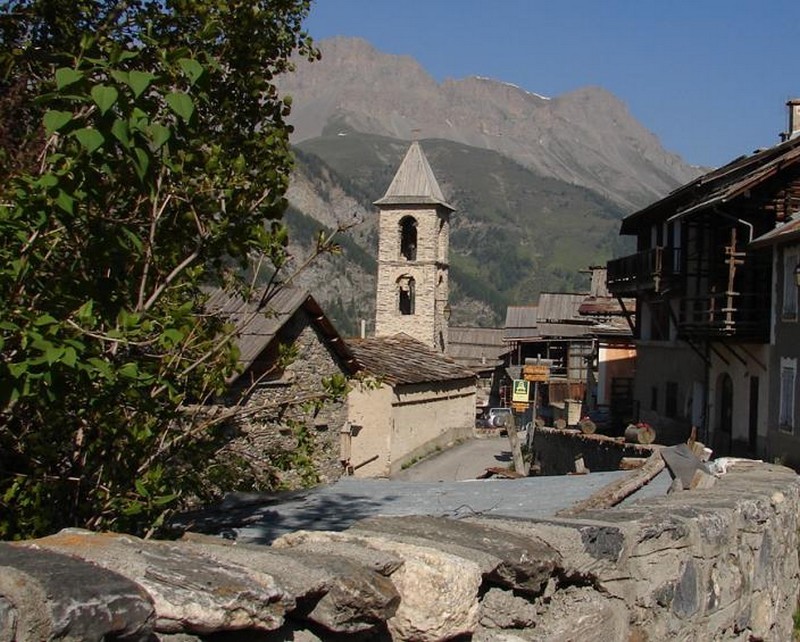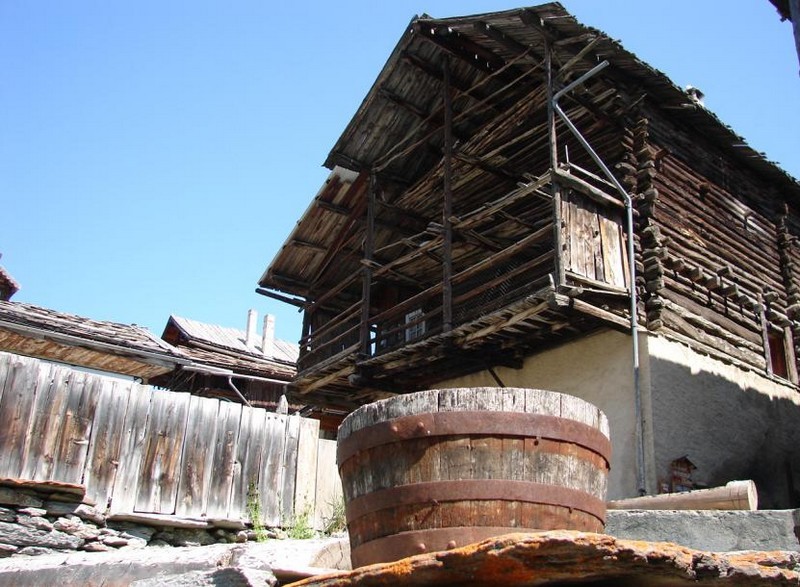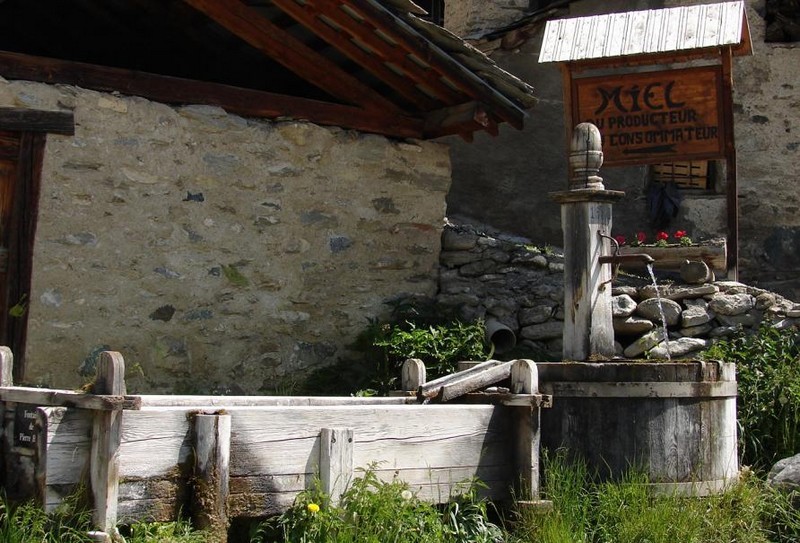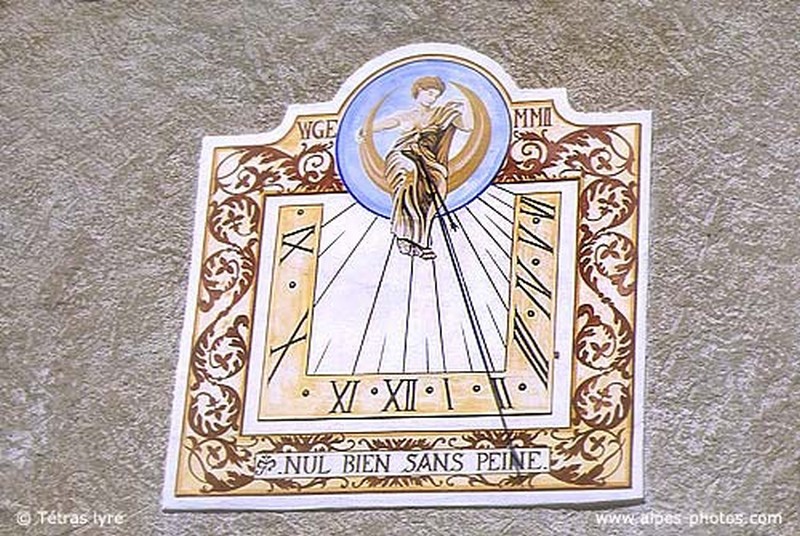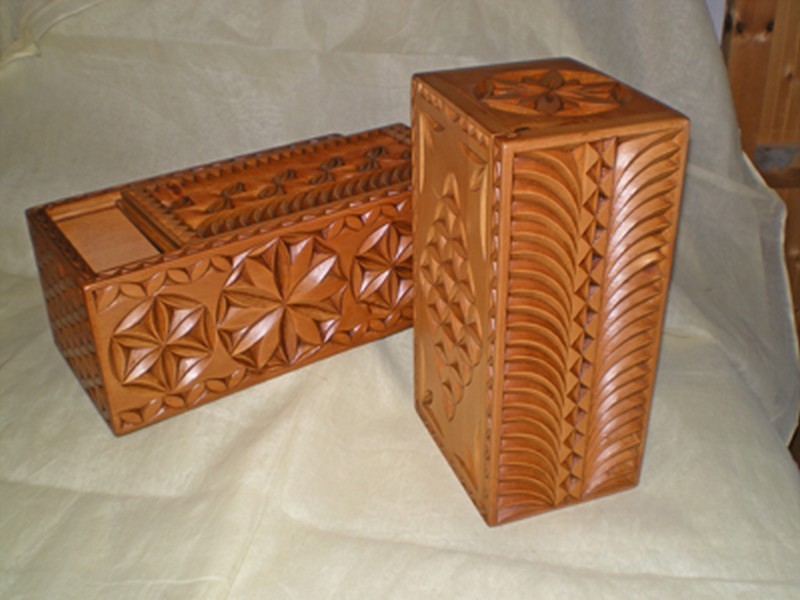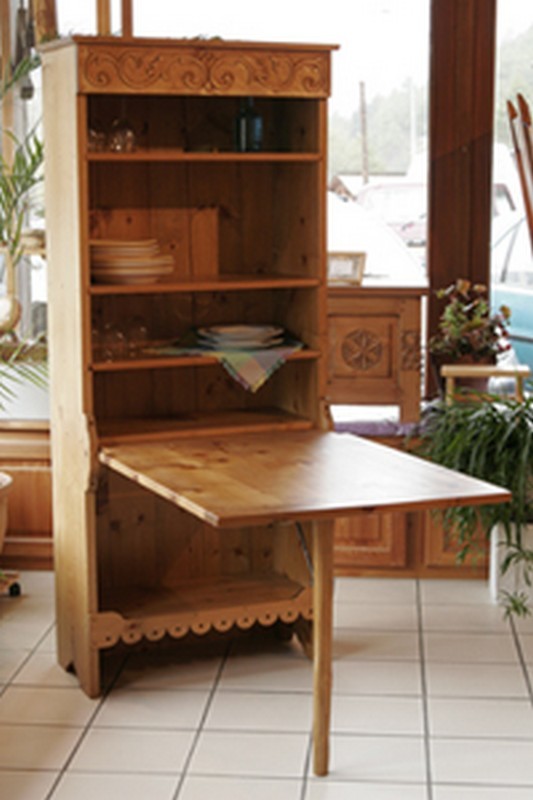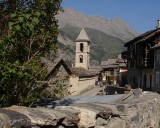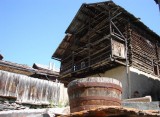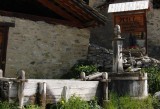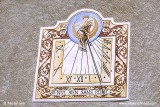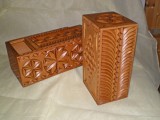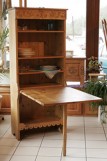Saint Véran
Presentation
St Véran is one of the most beautiful villages in France spread out on a grassy slope between 1990m and 2040 m high. It boasts the title of the highest commune in Europe.
St Véran : " where the cockerels peck the sky !”
The Houses
The traditional Saint-Véran houses are a fine example of European architecture.
These houses, which all date from the 17th and 18th centuries, served as the home, the stables and for storing crops. They are very distinctive with their “fustes” or open wooden attics for drying the harvest. The ground floor was made of stone and had two main rooms, the kitchen and the stable where during the winter man and animals lived together as the animals provided heat. Larch is abundant here and is predominant on a foundation of stone. The large building takes advantage of the sloping ground and has southwest-facing openings. The house was protected by an enormous roof covered with shingles (made of larch) or “lauzes”, large flat stones.
The houses were detached to prevent fires spreading throughout the hamlet. The church has a beautiful porch with columns supported by lions. The village has numerous crafts shops which offer a lovely choice of local arts and crafts. You can also climb up to the Notre dame de Clausis chapel where you have a fantastic view in good weather.
The family home changed in the 20th century for added comfort and to adapt to tourist demand.
Religious Heritage
Mountains have given rise to a mixture of superstitions, beliefs and popular rites dating from ancient times, the base on which Christianity has developed. It is a land of legends, but also a land of refuge and where the word of the Reformation was spread as in Vallouise and the Queyras, perhaps because of the hardships of day to day living. The faith of mountain communities is expressed by worship of the virgin Mary and devotion to the saints and in particular to the Saints who protected against infectious diseases ( Saint-Roch, Saint-Sébastien, and Saint-Antoine).
From the 17th to the 18th century, as a consequence of the counter-Reformation , high altitude communities reflected their faith in images, in the creation of pieces of furniture which became more and more colourful and exuberant, especially in the 17th century (with many confraternities of the Rosary in the Alps) and in the proliferation of chapels, churches and landmarks such as oratories, Mission or Passion crosses and Cavalries.
Wood Carving
In the beginning there were trees - larch and Arolla or Swiss pine. Larch is rot proof and commonly used in construction. The carpenter of yesteryear built the “fustes” with it; stacks of squared-off logs that let the air circulate to dry the hay in the attics. The wood of the Arolla pine is soft and easy to work, so particularly appreciated by the craftsman for wood carving. Furniture from the Queyras is decorated with rosettes carved out by knife by the woodworker. The pattern, drawn with a compass, can be repeated and combined in thousands of ways.
Sundials
In a land where the sun shines 300 days per year and where people once lived their lives to the rhythm of daylight hours, the sundial was the most reliable way to mark time. They were very widespread on the houses in the Queyras in general and in Saint Véran in particular, and also expressed an often religious faithfulness. People could decorate the bare wood, stone or adobe walls of their houses with a delicately painted and colourful picture to express the passing of time.
Hiking
A whole host of different family walks and hikes await! The setting varies from walks in the woods or mountain pastures, to trails along the rivers, to a lake or on the mountain passes that border Italy.
On all the waymarked trails, including the famous GR58 long distance hiking trail, what a pleasure it is to discover the wealth of flowers and plants , to hear the whistling of marmots or, if you’re lucky, or an early riser, to spot chamois or ibex on the ridges.
The Pic de Chateaurenard Observatory
Blessed with a sky of incomparable purity with no stray light, the Pic de Chateaurenard Observatory welcomes teams of amateur (but enlightened) astronomers throughout most of the year. Founded by the Observatory of Paris in 1974, it first served for observation of the solar corona and a coronograph was in operation for 10 years until 1982.
This remarkable site was restored to working order in 1990, following an agreement between Astroqueyras and the Paris-Meudon Observatory, and some local Saint-Véran residents.
In the afternoon, astronomers welcome hikers who wish to visit the dome.
Since summer 2010, the operation “coupole ouverte,” or open dome, has welcomed groups of 6 people for a night spent watching the summer sky (week to be determined) with members of the Astroqueyras association. This association accommodates groups from all over France who regularly come to observe here.
St Véran : " where the cockerels peck the sky !”
The Houses
The traditional Saint-Véran houses are a fine example of European architecture.
These houses, which all date from the 17th and 18th centuries, served as the home, the stables and for storing crops. They are very distinctive with their “fustes” or open wooden attics for drying the harvest. The ground floor was made of stone and had two main rooms, the kitchen and the stable where during the winter man and animals lived together as the animals provided heat. Larch is abundant here and is predominant on a foundation of stone. The large building takes advantage of the sloping ground and has southwest-facing openings. The house was protected by an enormous roof covered with shingles (made of larch) or “lauzes”, large flat stones.
The houses were detached to prevent fires spreading throughout the hamlet. The church has a beautiful porch with columns supported by lions. The village has numerous crafts shops which offer a lovely choice of local arts and crafts. You can also climb up to the Notre dame de Clausis chapel where you have a fantastic view in good weather.
The family home changed in the 20th century for added comfort and to adapt to tourist demand.
Religious Heritage
Mountains have given rise to a mixture of superstitions, beliefs and popular rites dating from ancient times, the base on which Christianity has developed. It is a land of legends, but also a land of refuge and where the word of the Reformation was spread as in Vallouise and the Queyras, perhaps because of the hardships of day to day living. The faith of mountain communities is expressed by worship of the virgin Mary and devotion to the saints and in particular to the Saints who protected against infectious diseases ( Saint-Roch, Saint-Sébastien, and Saint-Antoine).
From the 17th to the 18th century, as a consequence of the counter-Reformation , high altitude communities reflected their faith in images, in the creation of pieces of furniture which became more and more colourful and exuberant, especially in the 17th century (with many confraternities of the Rosary in the Alps) and in the proliferation of chapels, churches and landmarks such as oratories, Mission or Passion crosses and Cavalries.
Wood Carving
In the beginning there were trees - larch and Arolla or Swiss pine. Larch is rot proof and commonly used in construction. The carpenter of yesteryear built the “fustes” with it; stacks of squared-off logs that let the air circulate to dry the hay in the attics. The wood of the Arolla pine is soft and easy to work, so particularly appreciated by the craftsman for wood carving. Furniture from the Queyras is decorated with rosettes carved out by knife by the woodworker. The pattern, drawn with a compass, can be repeated and combined in thousands of ways.
Sundials
In a land where the sun shines 300 days per year and where people once lived their lives to the rhythm of daylight hours, the sundial was the most reliable way to mark time. They were very widespread on the houses in the Queyras in general and in Saint Véran in particular, and also expressed an often religious faithfulness. People could decorate the bare wood, stone or adobe walls of their houses with a delicately painted and colourful picture to express the passing of time.
Hiking
A whole host of different family walks and hikes await! The setting varies from walks in the woods or mountain pastures, to trails along the rivers, to a lake or on the mountain passes that border Italy.
On all the waymarked trails, including the famous GR58 long distance hiking trail, what a pleasure it is to discover the wealth of flowers and plants , to hear the whistling of marmots or, if you’re lucky, or an early riser, to spot chamois or ibex on the ridges.
The Pic de Chateaurenard Observatory
Blessed with a sky of incomparable purity with no stray light, the Pic de Chateaurenard Observatory welcomes teams of amateur (but enlightened) astronomers throughout most of the year. Founded by the Observatory of Paris in 1974, it first served for observation of the solar corona and a coronograph was in operation for 10 years until 1982.
This remarkable site was restored to working order in 1990, following an agreement between Astroqueyras and the Paris-Meudon Observatory, and some local Saint-Véran residents.
In the afternoon, astronomers welcome hikers who wish to visit the dome.
Since summer 2010, the operation “coupole ouverte,” or open dome, has welcomed groups of 6 people for a night spent watching the summer sky (week to be determined) with members of the Astroqueyras association. This association accommodates groups from all over France who regularly come to observe here.
Destination
GPS coordinates
Latitude : 44.70077
Longitude : 6.86752
Contact


